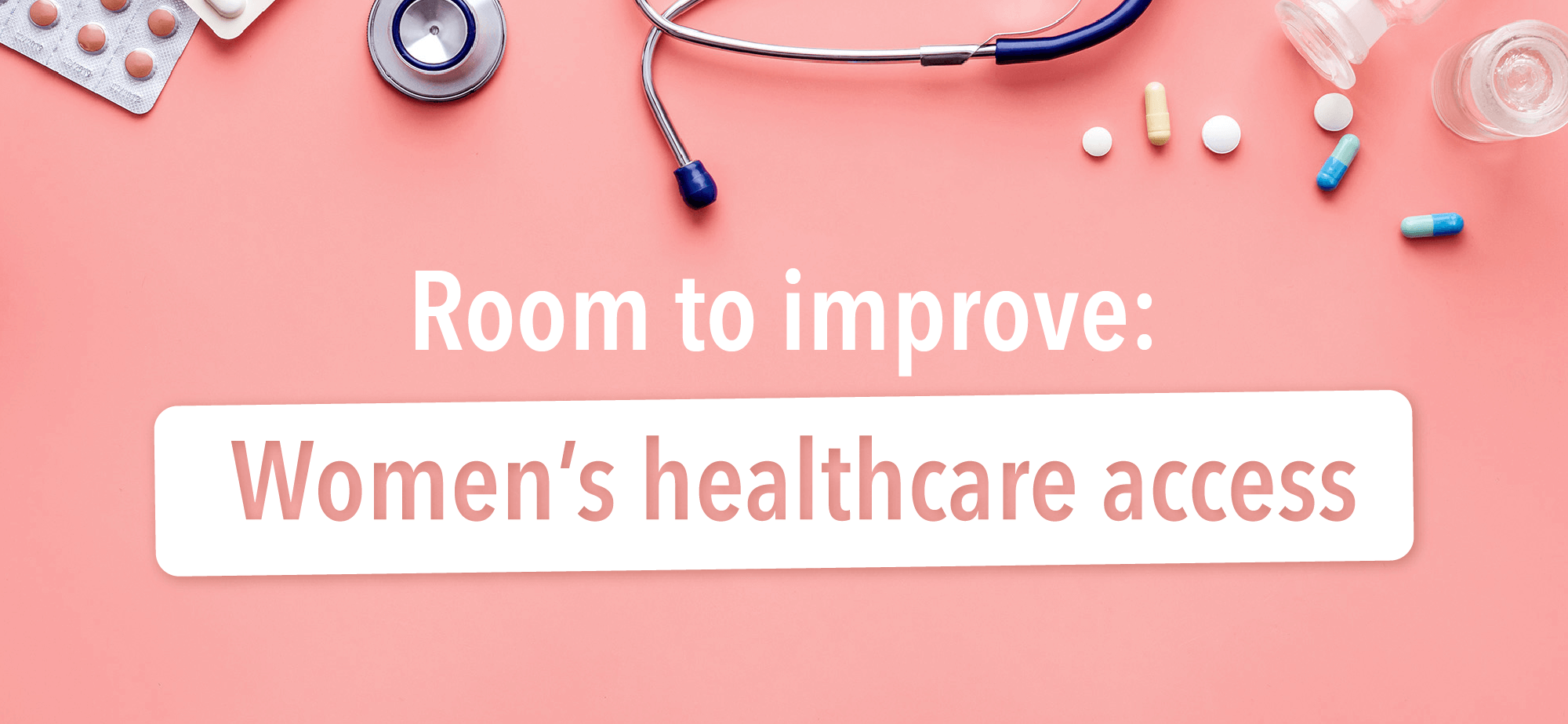The Burrow

In an ideal world, everyone would be satisfied with their healthcare. Regrettably, the world is not a perfect place and when it comes to healthcare, women seem to be getting the short end of the stick. For example, Australian women are less likely to feel that they are listened to carefully, shown respect or have enough time spent with them by emergency department doctors and hospital specialists than men, according to the Australian Bureau of Statistics (ABS).1
It’s a similar story elsewhere. In the USA, women are more likely to experience delays in triage (the time when a patient’s healthcare needs are assessed by matter of urgency) than men when going to hospital, according to the Journal of the American Medical Association (JAMA).2
To get a better idea of how well men and women feel that their country is supporting women’s access to healthcare, Compare the Market surveyed over 3,000 Australians, Canadians and Americans. We also asked them about how they prioritise physical and mental health, and how much they pay for health insurance.

A clear takeaway from Compare the Market’s survey was that women were more likely to say the government should be doing more to support women accessing healthcare. American women were the most unsatisfied, with 34% of those surveyed saying the government should be doing a lot more for access to female healthcare.
Canadian and Australian women were more likely to say they were somewhat satisfied but believed there was room for improvement.
While American women cried out for more support with access to healthcare, American men were most likely to say they were satisfied with their government’s contribution to women’s healthcare accessibility, though only by a slim amount. This was a trend evident across men’s responses from all countries surveyed.
The responses from both men and women from each of the three countries surveyed are displayed below.
When the responses from women were broken down by age, it became clear that younger generations felt that government should be doing more to support access to women’s health, while older generations were more likely to say they were satisfied with their government’s current contribution.
Once again, American women were the most critical of their government’s actions supporting female access to healthcare, with 44% of women aged 18-24 and 35-44 saying the government could do a lot more. Australian and Canadian women of the same age were more likely to say they were somewhat satisfied (34% and 38% respectively).
The answers from USA, Australian and Canadian female respondents are broken down by age-group below.
Across the USA, Australia and Canada, men were more likely to have health insurance than women, whether they bought it privately or had it organised through their work (and deducted from their pay, which was very rare in Australia but more common in North America).
Half of all Australian women surveyed had no health insurance. In Canada 51% of women had no health insurance, while this number went down to 42% in the USA.
| Health insurance status | USA | Australia | Canada | |||
| Men | Women | Men | Women | Men | Women | |
| I have private health insurance | 50% | 33% | 51% | 46% | 28% | 19% |
| I have private health insurance through my employer | 25% | 25% | 6% | 4% | 32% | 30% |
| I don’t have private health insurance | 25% | 42% | 43% | 50% | 40% | 51% |
Men also paid more for private health insurance than women, and this was the case across all three nations surveyed. According to survey results, American men with private health insurance pay $201 more per month than women with private health insurance on average. This gap was smallest in Australia, where insured men only pay $14 more per month on average than women.
As Anthony Fleming explains, “Australia’s health insurance system is not risk-rated, meaning different people with varying degrees of insurance risk still pay the same base rate for the same policy, prior to any government rebates, lifetime health cover loading, or age-based discounts being applied. So, the key differentiators between health insurance costs are what treatments they choose to have coverage for and whether they’re a single adult, a couple, or a family with children,” Fleming says.

The final part of Compare the Market’s survey asked respondents what they view as their main priority when it comes to their health. Both men and women from all three countries were more likely to prioritise physical health over mental health, though lower proportions of women did so than men.
Americans were the most likely to prioritise physical health over mental health, and Australians had the highest proportion of survey respondents who prioritised mental health over physical health.
| Health priority | USA | Australia | Canada | |||
| Men | Women | Men | Women | Men | Women | |
| Physical health | 76% | 67% | 63% | 57% | 67% | 58% |
| Mental health | 24% | 33% | 37% | 43% | 33% | 42% |
The fact that Australia had the highest proportion of people prioritising their mental health reflects all the hard work government and non-governmental organisations have done to raise awareness around the issue in Australia.
Fleming says that the Australian Government realises the importance of Mental Health and has worked to make it easier for people with private health insurance to access psychiatric care as part of the 2019 health insurance reforms.
When it comes to physical health, different health funds may have a range of extra benefits to help customers look after themselves, as Fleming explains.
“Beyond the different surgery and treatment categories for in-hospital treatment, health insurance extras can cover a variety of specialised non-hospital healthcare like chiropractic care and dental care, plus physiotherapy, prescription glasses, remedial massage and sometimes even discounts on gym memberships,” says Fleming.
“There are many different benefits with health insurance extras, so that men and women can choose the coverage that matters to them.”
Brought to you by Compare the Market: Making it easier for Australians to compare Health Insurance.
Compare the Market commissioned Pure Profile to survey 1,006 Australian, 1,010 Canadian and 1,012 American adults in September 2022. Some survey respondents identified as non-binary but due to only being a small proportion of all those surveyed those responses constituted fewer than 1% and that data has not been presented in this summary article.
When determining the average amount paid for or deducted from employment for health insurance costs, we removed any major outliers from the results and rounded to the nearest dollar. Currencies were converted using Google’s currency exchange tool on 13/10/22.
1 Patient Experiences in Australia: Summary of Findings. Australian Bureau of Statistics, Australian Government. 2021.
2 Martha-Conley E. Ingram, Monica Nagalla, Ing Shan et al. “Sex-Based Disparities in Timeliness of Trauma Care and Discharge Disposition,” Journal of the American Medical Association. Volume 157 Issue 7, Pages 609-616. 2022.